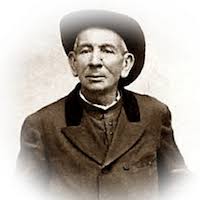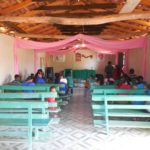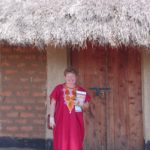Today’s missionary hero is St. José Gabriel del Rosario Brochero.
José was born on March 16, 1840 in Santa Rosa de Rio Primero, Córdoba, Argentina, the fourth of ten children. His family was very devout. In fact, his two sisters became Religious Sisters.
When he was 16, José began studying to become a priest. During his early studies, he met Miguel Ángel Juárez-Celman, who would one day be the tenth President of Argentina.
In August of 1866, José became a member of the Third Order of St. Dominic, and he was ordained a priest of the Archdiocese of Córdoba, Argentina, on November 4, 1866.
The year following ordination, 1867, Fr. José found himself nursing the sick during a cholera epidemic. His heroic clinical nursing of infectious patients was only the first clue that this man was not afraid to serve people in any way he could.
One of his first assignments was as a prefect of studies at the seminary. On November 12, 1869, he received an advanced academic degree.
From even his early days as a priest, Fr. José showed that a profound love for people and a strong desire to help them advance. Fortunately, he had the practicality of a good administrator and the energy and strength to carry out his plans. For example, to help people develop their spirituality, he founded a House of Exercise in 1877 and a school for girls in 1880.
What Fr. José was most famous for, however, was his many years as a pastor of a vast, primitive rural area in Great Highlands region of Argentina. In his parish that covered 1,675 square miles, Fr. José served 10,000 parishioners scattered all over the mountains and valleys.
Fr. José was a familiar figure among his flock, riding on horseback or by mule wearing his poncho and sombrero. The figure he cut led him to be known as “the gaucho” or “cowboy” priest.
Though his primary passion was to bring sacraments to the people, he always strived to improve their physical lives. For example, Fr. José is credited for building postal stations and telegraph offices, nearly 125 miles of roads, and helping officials plan for a railroad in the area.
Fr. José always had a special love for the sick and the poor, and one can almost imagine this religious cowboy figure arriving on his horse or donkey to give basic nursing care to people living in remote mountain and valley areas.
Somewhere along his pastoral journeys, Fr. José contracted Hansen’s disease (leprosy). Some people thought Fr. José caught it from drinking yerba mate with lepers. (Yerba mate is a caffeinated drink that comes from a rainforest holly tree.) Others speculate he caught leprosy from nursing one or more people with leprosy on his travels.
Late in his life, Fr. José served at the Cathedral of Córdoba and later as pastor in Villa del Tránsito.
Fr. José, who eventually went blind and deaf, died on January 26, 1914. The cause of death was leprosy. His last words were, “Now I have everything ready for the journey.”
Pope Francis, who compared José to the patron saint of priests, St. John Vianney, canonized José Gabriel del Rosario Brochero on October 16, 2016.
He is a patron saint of Córdoba and its major seminary, clergy, and the Diocese of Cruz del Eje in Argentina. St. José Gabriel’s feast day is January 26th.



